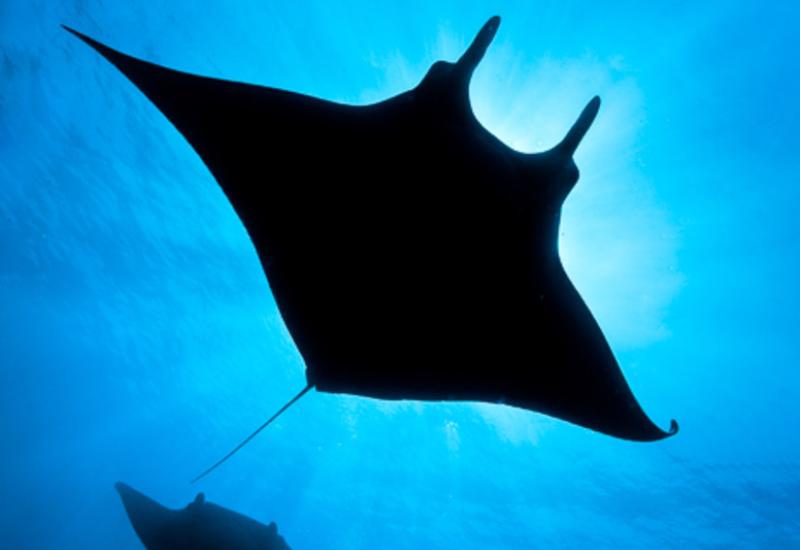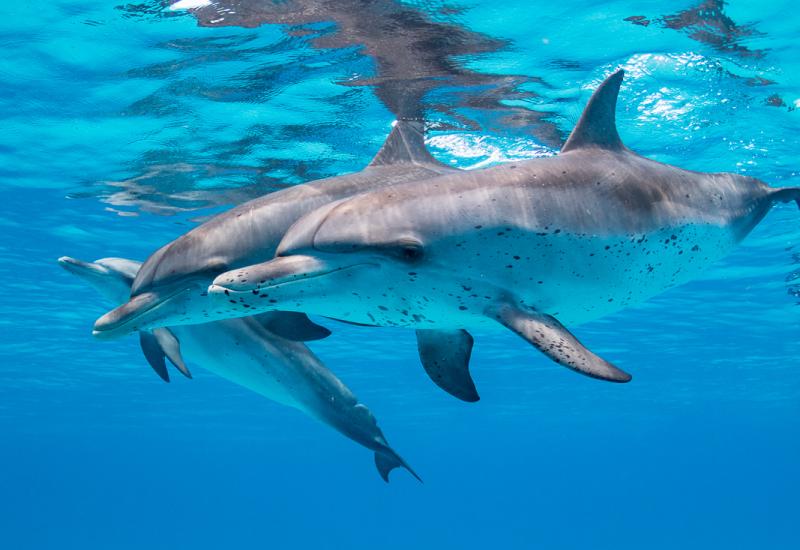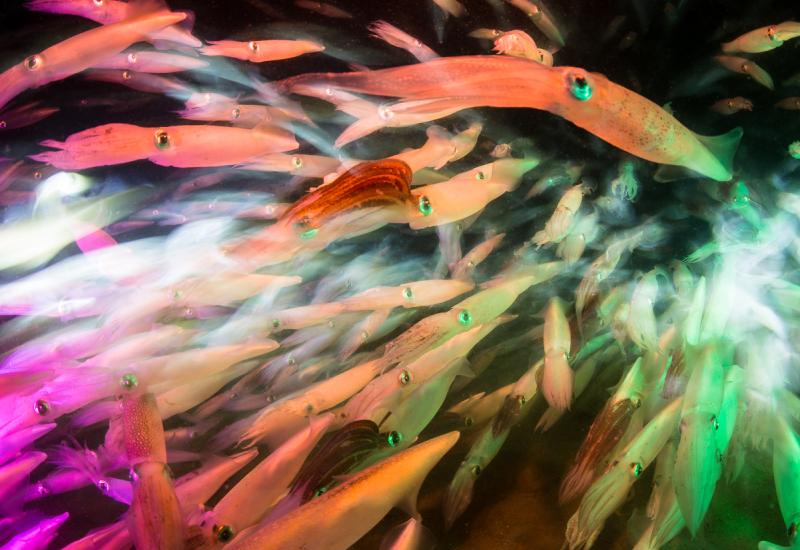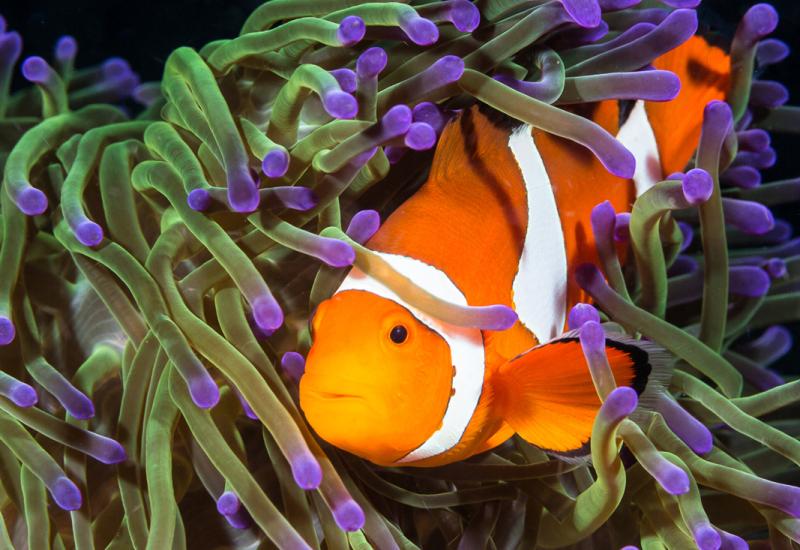Ask an Expert: Muck Sticks - Tool or Crutch?

AAE: Much Sticks
Matt Oldfield
Muck Sticks Are a Crutch — and Often Illegal. By Jed Cooper
A regular on Scuba Diving’s D2D message board, Cooper is an underwater photographer with Advanced Open Water, EAN and Rescue/O2/ MFA certifications, and several thousand logged dives. He lives in Huntersville, N.C.
Some underwater photographers say that a muck stick stabilizes them when the current is too strong for them to remain still, but it seems it has become a crutch for those who lack good buoyancy-control skills. Employing these skills, getting trim and using finning techniques achieve the same outcome without becoming a human/camera tripod or monopod.
The muck stick was invented for diving in muck and serves that purpose well, but it seems to have been adopted by nearly everyone who owns a camera now. When new divers see underwater photographers using muck sticks, they reason that if it’s OK for seasoned pros to use them, then it must be OK for all divers.
The seafloor community is made up of infauna — marine animals that live in the soft bottoms of the seafloor — including most species of shellfish, whose only

contact with the seafloor’s surface is via their siphons. Such sea life are the ones that are most likely harmed by muck sticks. The second most affected animals are epifauna, such as crabs and sea stars, which live on the seafloor. These animals are often the ones that photographers are trying to photograph to get a killer shot. I’m afraid that’s exactly what they’re getting — the killer shot.
The main issue I have with muck sticks is that the use of them violates many of the regulations put in place when marine sanctuaries are established. Most marine parks and other protected waters have adopted a no-touch policy of some sort, including Bonaire’s National Marine Park, Egypt’s Red Sea, Cozumel’s Parque Nacional Arrecifes and off North Carolina (the jurisdiction of the Department of Environment and Natural Resources). If you must use a muck stick, then at least use it outside the marine park.
If you’re in an area where its use is not forbidden, then use your tool at your discretion. Play by the rules. Whether you’re exploring Bonaire’s fishy reefs, get- ting in some awesome bottom time in the Red Sea, cruising the wall at Maracaibo in Cozumel, or spearing dinner off the coast of North Carolina, if you decide to ignore the rules and carry a muck stick, it should be considered a premeditated violation of the rules set forth by the folks who are kind enough to share their treasure with us.
Most of the dives I’ve done involve current of some sort. From mild Cayman drifts and screaming roller-coaster rides off Cozumel to almost all of my offshore local diving in North and South Carolina, I dive in currents and/or surge whether at the surface, midwater or on a wreck. These currents present a true challenge to underwater photographers trying to get “the shot.” I prefer to pass on the shot when the current has blown my chances — there will always be another opportunity.
It was in these conditions that I first tried a muck stick. And now I don’t gear up for a dive without one.
Hovering just above a macro subject with a heavy DSLR camera, video rig or even without a camera can be done (fins up — way up, baby), but it is challenging, especially in current.
Here’s how to do it correctly with a stick: Very carefully introduce the tip to the sand, muck or lifeless spot on the reef. Once set, the stick can be used as a monopod for the camera, or as a holding point in current. Then, use the stick as a push point to back out of a close encounter, keeping your fins up until well clear of the reef or bottom. Using a muck stick correctly makes for the best chance for a great image — and a clean getaway.
Yes, abusing the stick happens. Some divers might tease and manipulate subjects with their magic wand. This is inappropriate, as is using gloves for the same purpose.
The potential damage to the reef or other sea life from a carefully placed metal stick (typically only a quarter of an inch in diameter) cannot compare with a hand hold or a fin whack on a reef or, heaven forbid, a full-body layout (been there, seen that). The danger of touching down on venomous animals like stingrays, scorpionfish and many other camouflaged critters is real — a muck stick can help divers avoid all physical contact with the reef and sea life in general.
Like any other piece of equipment, a stick needs to be stowed when not in use so it does not dangle and inadvertently contact the reef. Mine has a clip and a wrist lanyard on the top end — it is easily clipped off on my BC and tucked into my waist strap when not in use.
A muck stick can be used to rap your tank as an underwater noisemaker to capture attention. It can hold you in place in a big current so you can catch your breath.
A muck stick is not a crutch and should not be a replacement for poor buoyancy control, but it can be a very useful tool for experienced divers who want to ensure that their close scrutiny of the reef in no way damages it.
Muck Sticks: A Great Tool When Used Correctly. By Judy G
Also a regular on the D2D board, Judy G is an underwater photographer with more than 1,500 dives under her belt. she is PADI rescue certified. To see her underwater photography, visit her website at www.awoosh.com.
You don’t know muck until you’re hovering over foot-deep, super-fine silt in current in Lembeh Strait or Ambon Harbor. This is the stuff that, when even only slightly disturbed, creates a silt storm that will immediately ruin any shot, and will likely enrage other divers patiently waiting their turn to frame up a hairy frogfish, flamboyant cuttlefish or zebra crab lurking in a magnificent urchin.

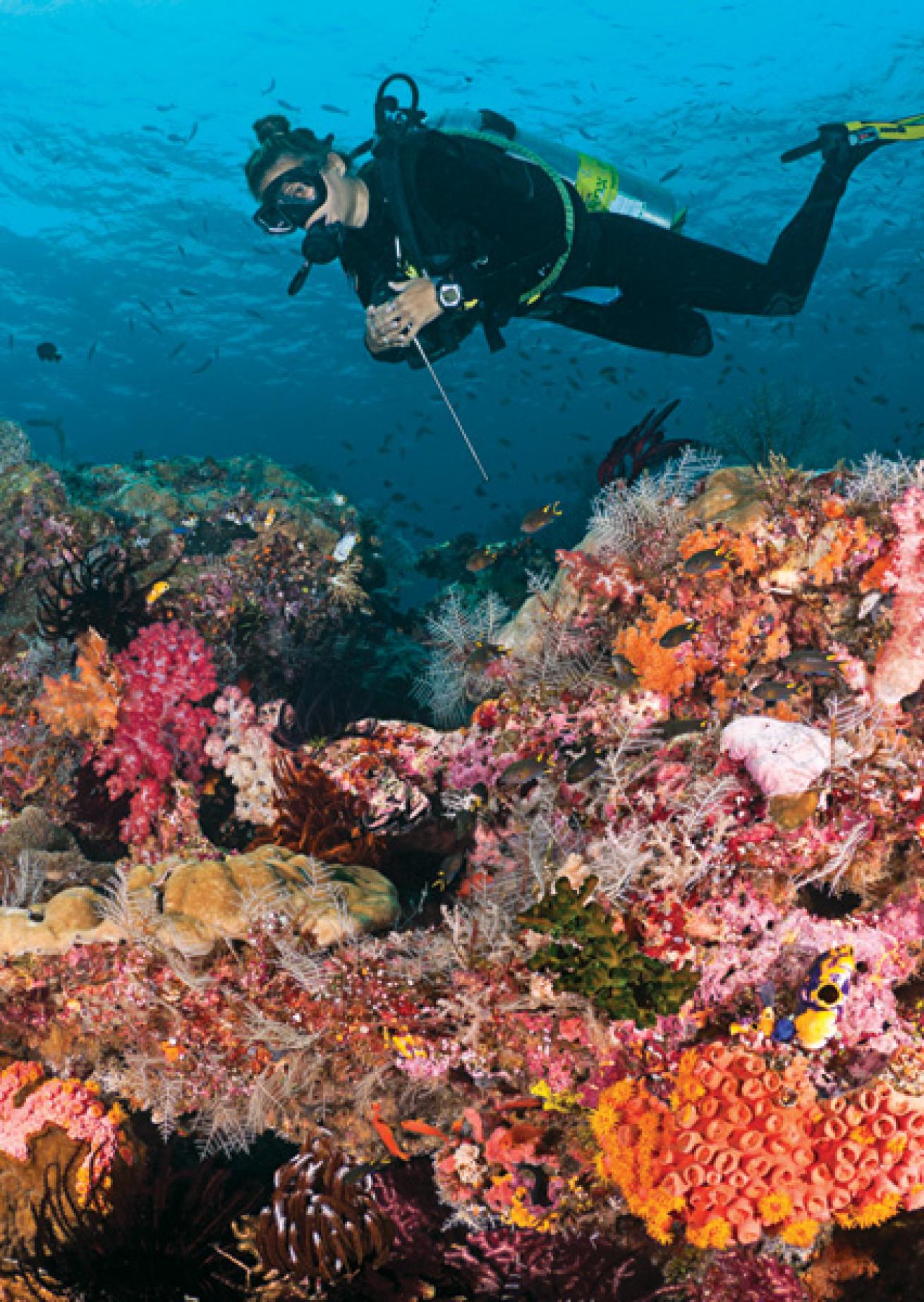
Matt Oldfield
Muck Sticks Are a Crutch — and Often Illegal. By Jed Cooper
A regular on Scuba Diving’s D2D message board, Cooper is an underwater photographer with Advanced Open Water, EAN and Rescue/O2/ MFA certifications, and several thousand logged dives. He lives in Huntersville, N.C.
Some underwater photographers say that a muck stick stabilizes them when the current is too strong for them to remain still, but it seems it has become a crutch for those who lack good buoyancy-control skills. Employing these skills, getting trim and using finning techniques achieve the same outcome without becoming a human/camera tripod or monopod.
The muck stick was invented for diving in muck and serves that purpose well, but it seems to have been adopted by nearly everyone who owns a camera now. When new divers see underwater photographers using muck sticks, they reason that if it’s OK for seasoned pros to use them, then it must be OK for all divers.
The seafloor community is made up of infauna — marine animals that live in the soft bottoms of the seafloor — including most species of shellfish, whose only

contact with the seafloor’s surface is via their siphons. Such sea life are the ones that are most likely harmed by muck sticks. The second most affected animals are epifauna, such as crabs and sea stars, which live on the seafloor. These animals are often the ones that photographers are trying to photograph to get a killer shot. I’m afraid that’s exactly what they’re getting — the killer shot.
The main issue I have with muck sticks is that the use of them violates many of the regulations put in place when marine sanctuaries are established. Most marine parks and other protected waters have adopted a no-touch policy of some sort, including Bonaire’s National Marine Park, Egypt’s Red Sea, Cozumel’s Parque Nacional Arrecifes and off North Carolina (the jurisdiction of the Department of Environment and Natural Resources). If you must use a muck stick, then at least use it outside the marine park.
If you’re in an area where its use is not forbidden, then use your tool at your discretion. Play by the rules. Whether you’re exploring Bonaire’s fishy reefs, get- ting in some awesome bottom time in the Red Sea, cruising the wall at Maracaibo in Cozumel, or spearing dinner off the coast of North Carolina, if you decide to ignore the rules and carry a muck stick, it should be considered a premeditated violation of the rules set forth by the folks who are kind enough to share their treasure with us.
Most of the dives I’ve done involve current of some sort. From mild Cayman drifts and screaming roller-coaster rides off Cozumel to almost all of my offshore local diving in North and South Carolina, I dive in currents and/or surge whether at the surface, midwater or on a wreck. These currents present a true challenge to underwater photographers trying to get “the shot.” I prefer to pass on the shot when the current has blown my chances — there will always be another opportunity.
Muck Sticks: A Great Tool When Used Correctly. By Judy G
Also a regular on the D2D board, Judy G is an underwater photographer with more than 1,500 dives under her belt. she is PADI rescue certified. To see her underwater photography, visit her website at www.awoosh.com.
You don’t know muck until you’re hovering over foot-deep, super-fine silt in current in Lembeh Strait or Ambon Harbor. This is the stuff that, when even only slightly disturbed, creates a silt storm that will immediately ruin any shot, and will likely enrage other divers patiently waiting their turn to frame up a hairy frogfish, flamboyant cuttlefish or zebra crab lurking in a magnificent urchin.

It was in these conditions that I first tried a muck stick. And now I don’t gear up for a dive without one.
Hovering just above a macro subject with a heavy DSLR camera, video rig or even without a camera can be done (fins up — way up, baby), but it is challenging, especially in current.
Here’s how to do it correctly with a stick: Very carefully introduce the tip to the sand, muck or lifeless spot on the reef. Once set, the stick can be used as a monopod for the camera, or as a holding point in current. Then, use the stick as a push point to back out of a close encounter, keeping your fins up until well clear of the reef or bottom. Using a muck stick correctly makes for the best chance for a great image — and a clean getaway.
Yes, abusing the stick happens. Some divers might tease and manipulate subjects with their magic wand. This is inappropriate, as is using gloves for the same purpose.
The potential damage to the reef or other sea life from a carefully placed metal stick (typically only a quarter of an inch in diameter) cannot compare with a hand hold or a fin whack on a reef or, heaven forbid, a full-body layout (been there, seen that). The danger of touching down on venomous animals like stingrays, scorpionfish and many other camouflaged critters is real — a muck stick can help divers avoid all physical contact with the reef and sea life in general.
Like any other piece of equipment, a stick needs to be stowed when not in use so it does not dangle and inadvertently contact the reef. Mine has a clip and a wrist lanyard on the top end — it is easily clipped off on my BC and tucked into my waist strap when not in use.
A muck stick can be used to rap your tank as an underwater noisemaker to capture attention. It can hold you in place in a big current so you can catch your breath.
A muck stick is not a crutch and should not be a replacement for poor buoyancy control, but it can be a very useful tool for experienced divers who want to ensure that their close scrutiny of the reef in no way damages it.

